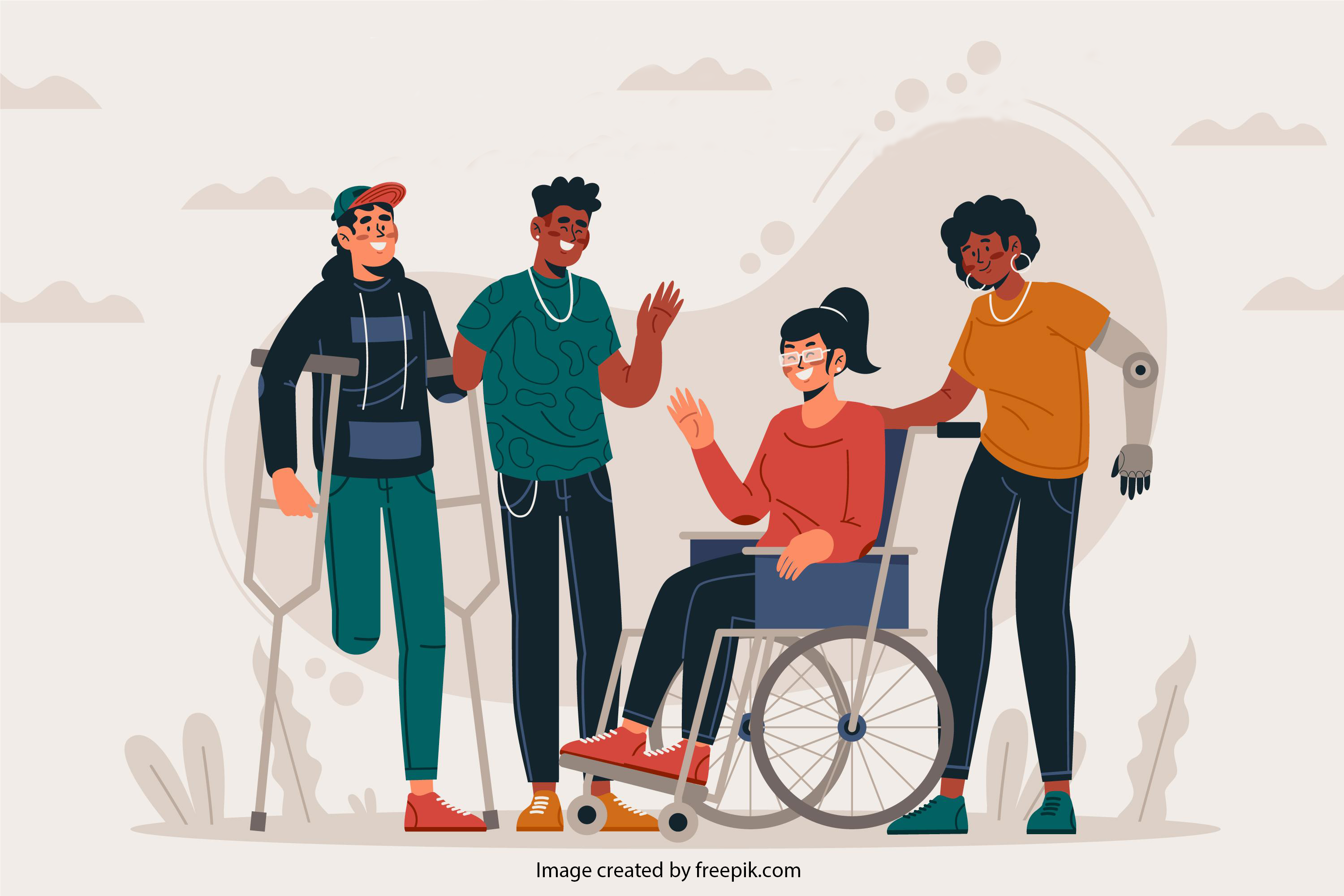Physical {Dis}Abilities
This section of the Inclusive Virginia Adult Education website provides information, instructional strategies, resources, and accommodations for adult education practitioners on serving adult learners with physical {dis}abilities.
Orthopedic impairment means a severe orthopedic impairment that adversely affects a learner’s educational performance. The term includes impairments caused by a congenital anomaly, impairments caused by disease (e.g., poliomyelitis, bone tuberculosis), and impairments from other causes (e.g., cerebral palsy, amputations, and fractures or burns that cause contractures) (IDEA Sec. 300.8).
Below are some ways individuals can acquire a physical {dis}ability or condition (adapted from PANDA):
- Congenital {Dis}Ability: A condition dating from birth
- Acquired {Dis}Ability: Occurs after birth and may be the result from trauma, illness, or disease; examples include: spinal cord injury, osteoporosis, Lou Gehrig’s disease
- Chronic Health Condition: A condition that is long-lasting and “cannot be prevented by vaccines or cured by medication” (U.S. National Center for Health Statistics)
- Temporary Disabilities: A condition that is short-term and from which the learner will recover; examples include: a broken arm, knee replacement, or surgery
Some examples of physical {dis}abilities include: brittle bone disease, cerebral palsy, muscular dystrophy, and spina bifida. Descriptions of these {dis}abilities can be found on this site. Click on the name of the {dis}ability in the left column.

Additional Information
Instructional Strategies
Instructional strategies will vary depending on the needs of the learner. However, the following are some examples:
- Provide guided notes or encourage the use of an audio-recorder in class
- Allow the use of a computer or other assistive technology when completing classwork
- Provide frequent breaks
- Allow extra time between activities to accommodate physical and mental transitions
- Arrange the room so it is easy to navigate; this will help minimize fatigue when moving around the room
- Highlight, or otherwise visually emphasize, important information
- Allow extra time for processing information and responding to questions
The following websites provide information on some instructional strategies:
This educator’s guide (Disability Learning Management Solutions, 2015) gives suggestions for assistive technology, accommodations, instructional strategies, and some links to descriptions of some physical {dis}abilities.
This article provides some useful tips and considerations when working with learners with physical {dis}abilities.
Accommodations
Learners with physical {dis}abilities may require various supports in their educational environments. These supports will differ depending on the type and severity of the {dis}ability. The following are a few examples:
- Note taking assistance such as a paper or digital copy of notes, the ability to record classroom discussions, access to a computer or laptop
- A variety of sitting or standing options such as adjustable desks, tables, or chairs
- The physical space should be easily navigable and learners should have accessible access to classrooms, restrooms, computer labs, and other areas of the building or educational spaces
- Some other accommodations can be found on this list
Assistive Technology:
- Communication (speech recognition such as speech to text, screen readers, etc.)
- Mobility (wheelchairs, walkers, canes, etc.)
These resources provide more detailed information related to the accommodations tools commonly used to support learners with physical {dis}abilities